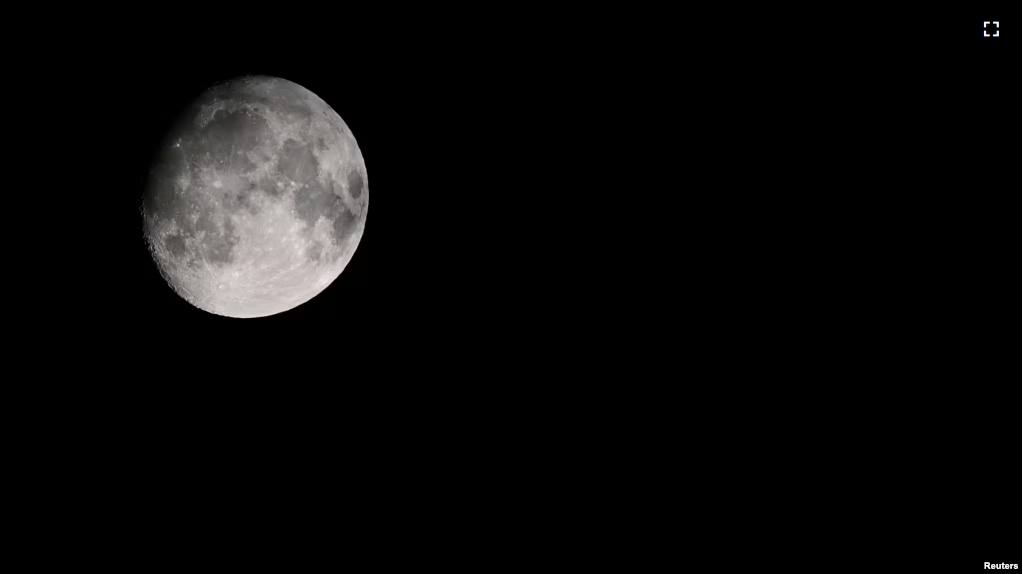Scientists say new examinations of soil collected on the moon suggest its atmosphere might have been created by repeated meteorite strikes.
Researchers studying the moon first used instruments to confirm it had an atmosphere in the early 1970s. The American space agency NASA explains the moon’s atmosphere is “very thin and weak.” It is technically considered an “exosphere.”
The newly examined soil was collected by NASA astronauts during America’s Apollo program from 1969 to 1972. The trips resulted in astronauts capturing about 382 kilograms of rocks and soil, called samples.
Instead of attempting to measure the moon’s atmosphere in a direct way, investigators looked to the old soil material. They theorized that the soil should contain residue material from atoms released into the lunar atmosphere over billions of years.
The research was led by scientists at the University of Chicago and Massachusetts Institute of Technology (MIT). Their results recently appeared in a study in the publication Science Advances. Nicole Nie was the lead writer of the study. She is a planetary scientist at MIT.
Meteorite impacts
Nie said that when meteorites impact, or hit, an object like the moon, they create very high temperatures. Such strikes can heat up the surface by 2,000 to 6,000 degrees Celsius. These extreme temperatures melt and vaporize rocks at the surface and release atoms contained in dust and soil into the atmosphere.
Some of the atoms end up being pushed into space, while others remain just above the surface. The researchers said the soil examinations led to the discovery that the moon’s atmosphere was formed through a process known as “impact vaporization.”
Nie and her team centered their examinations on two main elements – potassium and rubidium. These substances were chosen because they can easily be vaporized by meteorite hits. The process involved studying the behaviors of different kinds of isotopes found in potassium and rubidium. That study persuaded the team that repeated meteorite strikes formed the atmosphere.
In the past, studies have shown the moon’s atmosphere might have been created by either meteor activity or the solar wind. Solar wind describes a continuous flow of charged particles from the sun that spreads across the solar system.
The researchers said the latest study provides new evidence that most of the lunar atmosphere was likely formed by repeated meteorite hits over billions of years. After testing 10 samples of lunar soil, the team concluded that much more of the atmosphere is due to meteor activity than to the solar wind.
“At least 70 percent of the lunar atmosphere is created by these meteorite impacts,” Nie said in a statement. “A much smaller percentage is created by the solar wind abrasion of the surface,” she added.
Nicolas Dauphas is a professor of geophysical sciences at the University of Chicago. He helped lead the research. Dauphas said, “It turns out the answer to this longstanding question was right in front of us – preserved in lunar soil brought back to Earth by the Apollo missions.”
Nie said understanding such processes can be extremely valuable to planning future missions to the moon, Mars and beyond. “If humans want to move to different planetary bodies someday, we will have to understand what’s going on at the surface to be able to prepare.” She added, “Each planetary body is different, and the more we understand about these processes, the more complete picture we’ll have.”
I’m Bryan Lynn.
Reuters, the University of Chicago and MIT reported this story. Bryan Lynn adapted the reports for VOA Learning English.
__________________________________________
Words in This Story
meteorite – n. a piece of rock from outer space that has fallen to a planet’s surface
exosphere – n. the outermost layer of a planet’s atmosphere
residue – n. something that remains after most of a substance has disappeared or been removed
vaporize – v. to turn, or cause something to turn, from a solid or liquid state into a gas
abrasion – n. the process of rubbing away the surface of something
preserve – v. to keep something the same or prevent it from being damaged or destroyed
